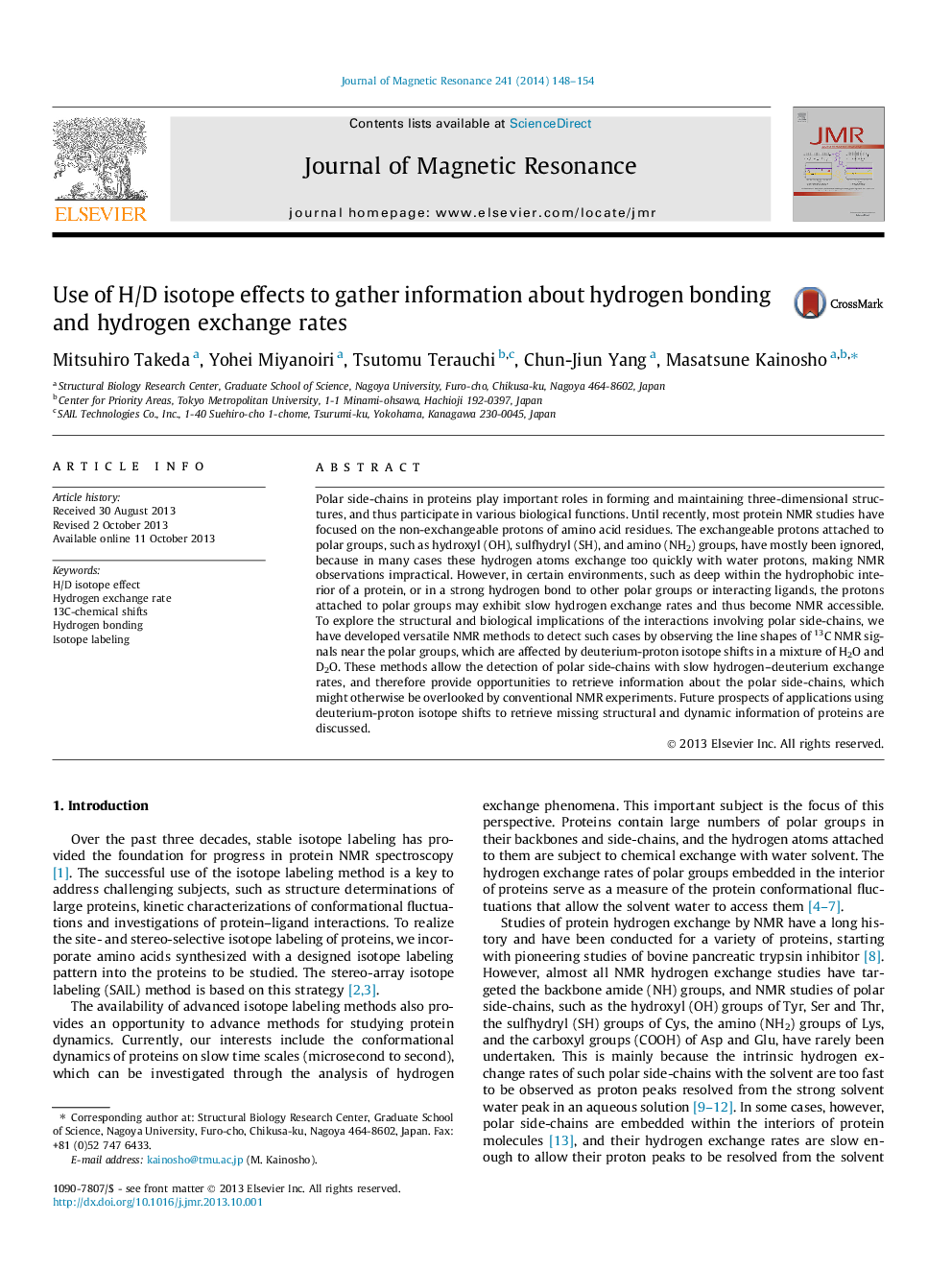| Article ID | Journal | Published Year | Pages | File Type |
|---|---|---|---|---|
| 5405452 | Journal of Magnetic Resonance | 2014 | 7 Pages |
Abstract
Polar side-chains in proteins play important roles in forming and maintaining three-dimensional structures, and thus participate in various biological functions. Until recently, most protein NMR studies have focused on the non-exchangeable protons of amino acid residues. The exchangeable protons attached to polar groups, such as hydroxyl (OH), sulfhydryl (SH), and amino (NH2) groups, have mostly been ignored, because in many cases these hydrogen atoms exchange too quickly with water protons, making NMR observations impractical. However, in certain environments, such as deep within the hydrophobic interior of a protein, or in a strong hydrogen bond to other polar groups or interacting ligands, the protons attached to polar groups may exhibit slow hydrogen exchange rates and thus become NMR accessible. To explore the structural and biological implications of the interactions involving polar side-chains, we have developed versatile NMR methods to detect such cases by observing the line shapes of 13C NMR signals near the polar groups, which are affected by deuterium-proton isotope shifts in a mixture of H2O and D2O. These methods allow the detection of polar side-chains with slow hydrogen-deuterium exchange rates, and therefore provide opportunities to retrieve information about the polar side-chains, which might otherwise be overlooked by conventional NMR experiments. Future prospects of applications using deuterium-proton isotope shifts to retrieve missing structural and dynamic information of proteins are discussed.
Related Topics
Physical Sciences and Engineering
Chemistry
Physical and Theoretical Chemistry
Authors
Mitsuhiro Takeda, Yohei Miyanoiri, Tsutomu Terauchi, Chun-Jiun Yang, Masatsune Kainosho,
